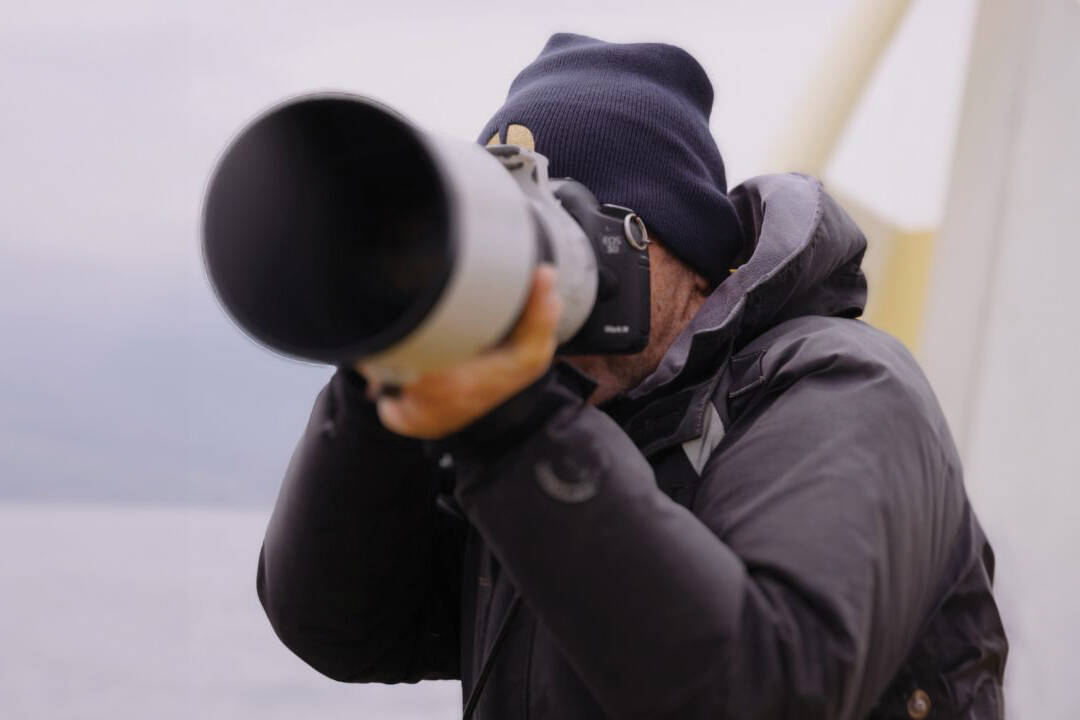6 essentials for photographing whales

Prince of Whales is excited to offer two limited-capacity Full-Day Photography Tours this year – June 16 and Sept. 8. Learn valuable tips and tricks from some of the best wildlife photographers on the Island! Photo courtesy Prince of Whales
Viewing our ocean wildlife in its natural habitat is among the most meaningful West Coast experiences.
Capturing those moments on camera, however, isn’t easy.
The challenge is that wildlife doesn’t always behave how you expect it to – especially true when you’re trying to guess where an orca might breach next, or how long a humpback will dive before resurfacing.
Yet when you capture a killer whale spy-hopping on the horizon or spot a sea otter floating among the kelp, your patience is rewarded with a fantastic image to save and share, memories to last a lifetime, and often a new appreciation for our ocean environment and the animals living within it.
It’s with that in mind that local whale and wildlife-watching experts, Prince of Whales, collected the best advice for photographers hoping to capture that magic moment on the water.
1. Bring the right gear – before setting out to photograph whales or other wildlife, it’s essential to equip yourself with the right gear, including:
- Camera: A DSLR (digital single-lens reflex) or mirrorless camera is ideal due to its interchangeable lenses and manual settings.
- Lenses: Remembering that you must maintain distance between yourself and wildlife, investing in a telephoto lens at least 400mm or more gives you the flexibility to adjust your framing as whales move in and out of view is important.
- Tripod or Gimbal: These stabilizing tools help steady your camera, especially when using a heavy zoom lens. However because the boat continuously moves, it can be challenging to stabilize.
- Filters: A polarizing filter can reduce glare from the water’s surface and enhance the colours beneath.
2. Choose the right location and season
The right location and season greatly improve your chances of encountering whales and capturing their natural behaviours. Research areas are known for whale migrations and congregations, such as coastal regions with a history of whale sightings, remembering that whale behaviour varies by species and season.
4. Practice patience and timing
Photographing wildlife, especially whales, requires patience and impeccable timing. Be prepared to spend extended periods waiting for the right moment to capture breaches, tail flukes or spouting, and use burst mode to capture a series of shots in quick succession, so you don’t miss any remarkable moments.
5. Mind your focus and exposure
Whales are massive animals, so focus on their eyes, fins or other details. Use a fast shutter speed to freeze their movements and prevent motion blur, adjusting your exposure settings to account for the bright reflections on the water’s surface and the dark depths below.
6. Respect wildlife and regulations
Always prioritize the well-being of the whales, wildlife and their natural habitat, adhering to wildlife watching regulations and keeping a safe distance to avoid causing stress or disturbance.
A photography tour with the pros
If you’re keen to capture the West Coast’s most majestic creatures on camera, who better to learn from than the professionals themselves! Prince of Whales’ celebrated photographers will be sharing their knowledge and experience in two limited-capacity Full-Day Photography Tours this season.
Last year’s inaugural photography tour was nothing short of magical, with an array of coastal wildlife spotted, including humpbacks and four different killer whale groups, along with harbour porpoises, sea otter, eagles, seals and sea lions, and an array of bird life.
Building on that success, the Prince of Whales team is excited to offer two tours this year – June 16 and Sept. 8. In addition to learning valuable tips and tricks from some of the best wildlife photographers on the Island, the limited capacity means you’ll have plenty of room to test your skills.
